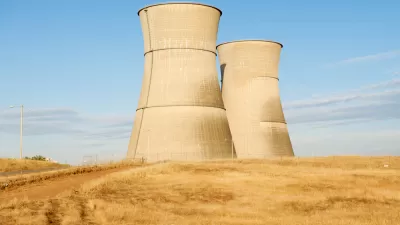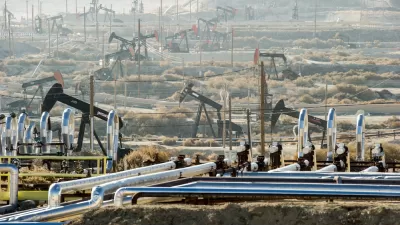Supplying power and transportation to 10 billion people while limiting hazardous emissions may be the defining challenge of the century. Many energy analysts think renewables won't get us there, and are betting on a nuclear energy miracle.
"Many environmentalists believe that wind and can be scaled to meet the rising demand [of billions emerging from poverty], especially if coupled with aggressive efforts to cut waste," reports Justin Gillis. "But a lot of energy analysts have crunched the numbers and concluded that today’s renewables, important as they are, cannot get us even halfway there."
Gillis discusses the most promising innovations in nuclear power, which many technologists see as the most viable option for providing a reliable source of electricity without carbon emissions. These include "a practicable type of nuclear fusion", "a fission reactor that could run on today’s nuclear waste", and "a safer reactor based on an abundant element called thorium."
"Beyond the question of whether they will work," he adds, "these ambitious schemes pose a larger issue: How much faith should we, as a society, put in the idea of a big technological fix to save the world from ?"
And as is appropriate for a nuclear-related news item that appeared on the two-year anniversary of the Tohoku earthquake, we offer a reminder of the twelve different nuclear power "near miss" events that occurred in the United States in 2012.
FULL STORY: In Search of Energy Miracles

Alabama: Trump Terminates Settlements for Black Communities Harmed By Raw Sewage
Trump deemed the landmark civil rights agreement “illegal DEI and environmental justice policy.”

Study: Maui’s Plan to Convert Vacation Rentals to Long-Term Housing Could Cause Nearly $1 Billion Economic Loss
The plan would reduce visitor accommodation by 25% resulting in 1,900 jobs lost.

Why Should We Subsidize Public Transportation?
Many public transit agencies face financial stress due to rising costs, declining fare revenue, and declining subsidies. Transit advocates must provide a strong business case for increasing public transit funding.

Paris Bike Boom Leads to Steep Drop in Air Pollution
The French city’s air quality has improved dramatically in the past 20 years, coinciding with a growth in cycling.

Why Housing Costs More to Build in California Than in Texas
Hard costs like labor and materials combined with ‘soft’ costs such as permitting make building in the San Francisco Bay Area almost three times as costly as in Texas cities.

San Diego County Sees a Rise in Urban Coyotes
San Diego County experiences a rise in urban coyotes, as sightings become prevalent throughout its urban neighbourhoods and surrounding areas.
Urban Design for Planners 1: Software Tools
This six-course series explores essential urban design concepts using open source software and equips planners with the tools they need to participate fully in the urban design process.
Planning for Universal Design
Learn the tools for implementing Universal Design in planning regulations.
Smith Gee Studio
Alamo Area Metropolitan Planning Organization
City of Santa Clarita
Institute for Housing and Urban Development Studies (IHS)
City of Grandview
Harvard GSD Executive Education
Toledo-Lucas County Plan Commissions
Salt Lake City
NYU Wagner Graduate School of Public Service





























